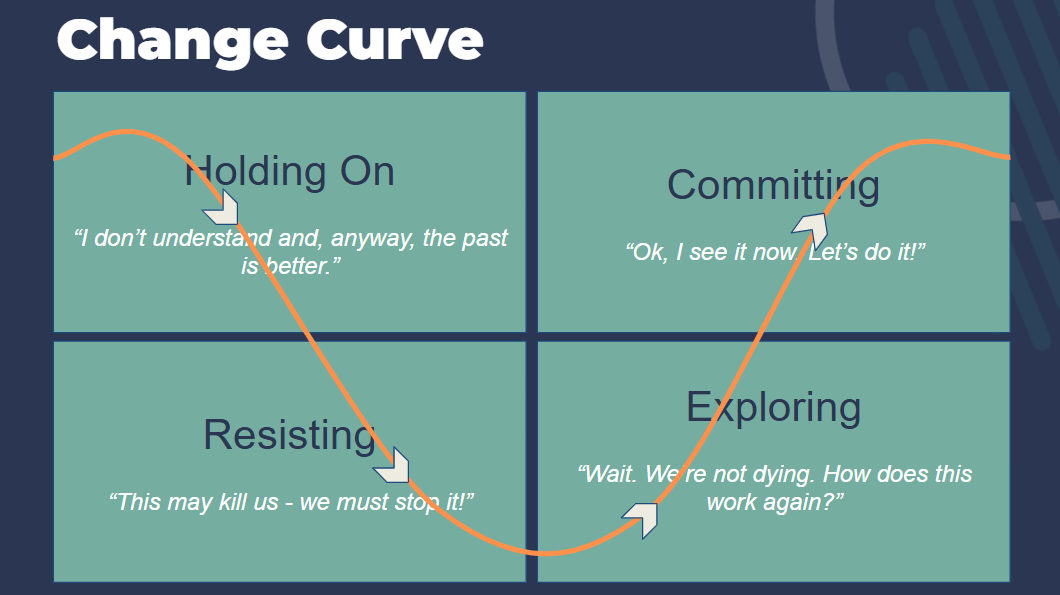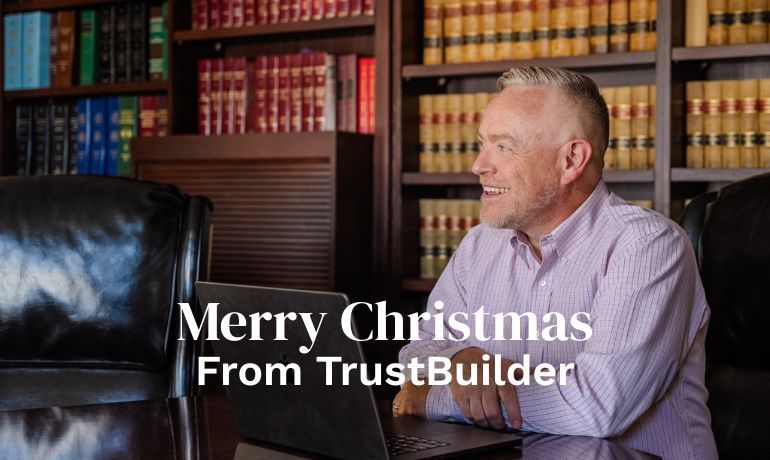Building Trust During Organizational Change
Organizational change is inevitable. Whether it’s organic growth, a merger, restructuring, leadership transition, or operational modernization, change is—and should be—a constant reality for modern businesses.
While change ideally offers new opportunities that drive growth, it also introduces uncertainty to employees. Will I lose my position? Will my job change? What will happen to my department? In times of uncertainty, trust becomes more important than ever.
At
TrustBuilder, we help organizations cultivate trust, a critical commodity when navigating transitions. Trust is the foundation that can ensure that change is not just managed, but welcomed and embraced.
Trust is a stabilizing force that helps employees feel secure, engaged, and motivated during periods of disruption. Without trust, change efforts often face resistance, confusion, and morale issues—problems that could drive employees to seek alternative employment or create workplace tension. In a high-trust environment, however, organizations can foster resilience, alignment, and momentum. Here’s how businesses can build and maintain trust during organizational change.
1. Communicate Early and Transparently
During change, some information can not be shared for legal or other reasons. However, regardless of what can or cannot be shared, clear, honest, and timely communication is the first step in building trust during change. When employees understand what is happening, why it is happening, and how it will affect them, they can orient themselves properly to the transition without letting their imagination and fears run rampant. Uncertainty breeds anxiety, and silence or vague updates only fuel speculation, rumors, and mistrust.
Leaders should communicate openly about the purpose, anticipated benefits, and potential challenges of the change, as well as the timeline for implementation. Even when an update is difficult or the news simply is that there is no news, transparency demonstrates respect for employees and reinforces leadership’s credibility.
2. Acknowledge Concerns and Emotions
Change often triggers emotional responses, such as fear, frustration, doubt, and even grief. Ignoring or downplaying these emotions can demean or alienate employees. Instead, leaders should acknowledge that change can be hard and validate people’s experiences. Understanding the emotions at play should help leaders manage change more effectively.
Creating forums such as town halls, surveys, or small group discussions where employees can voice their concerns fosters a culture of openness. Employees who feel heard and understood are likelier to stay engaged and trust the process.
3. Demonstrate Consistent and Ethical Leadership
Trust is built through consistent, values-driven action, insight, and connection. During times of change, it is crucial for leaders to model integrity, fairness, and accountability. This means keeping promises, being honest about what they know and don’t know, and treating all employees respectfully.
Leading by example is always more powerful than leading by mandate. Action that consistently models integrity reinforces the belief that the organization is acting in good faith. Employees are more likely to follow a change initiative when they have evidence that supports trusting the people driving it.
4. Involve Employees in the Process
Employees involved in shaping change—whether through feedback sessions, pilot programs, or implementation planning—feel more invested in the outcome and are more likely to view the change positively. By asking employees to offer their suggestions, management demonstrates its trust in their judgment, enabling your organization to transition more smoothly. Moreover, insights offered by ground-level employees often improve the quality of the changes.
Involving teams in decision-making, even in small ways, creates shared accountability and ownership, boosting employee confidence in the organization’s new direction.
5. Provide Support and Resources
Change may require new skills, job tasks, behaviors, or working methods. Providing adequate training, tools, and support shows that the organization is committed to its employees’ success—and reassures them that they won’t be replaced. A lack of support can lead to frustration and disengagement, eroding trust in the change process.
Consider offering coaching, mentoring, training, or change management workshops to help employees adapt and thrive. This shows that the organization invests in people and will work to build goodwill and strengthen the relationship between leadership and staff.
6. Celebrate Small Wins and Progress
Change can feel overwhelming, especially when progress is slow or invisible. Celebrating milestones—even small ones—promotes a sense of achievement and assures employees that the changes are fulfilling expectations, reinforcing trust in the organization’s direction.
Recognize team efforts, highlight any positive outcomes, and share success stories. Celebrating progress helps maintain morale and gives employees the confidence to continue investing in the organization’s future.

When you make a concerted effort to build trust during change, you can overcome employee reluctance or resistance, converting skeptics into change ambassadors.
Navigating Change with TrustBuilder
TrustBuilder believes trust doesn’t happen by accident. It must be built and cultivated with intention and awareness. Companies with a high-trust culture operate more efficiently and effectively, especially during change. Transparency, consistency, integrity, and a conscientious commitment to the people who keep your organization operating can all be critical aspects of building a high-trust environment. Our
specialized and customized programs help organizations identify initiatives that can strengthen trust and confidently guide teams through transitions.
If your business is preparing for or navigating change, let us support you in building the trust that leads to a successful reorganization and a transformation of your company.
Contact TrustBuilder today to learn more or schedule a presentation. Turn uncertainty into opportunity, with trust as your foundation.
Recent Posts


![SYNTHESIS [2026] in light blue text.](https://lirp.cdn-website.com/f969fb45/dms3rep/multi/opt/TB_Horizontal_White-b3af8ef2-1920w.png)








